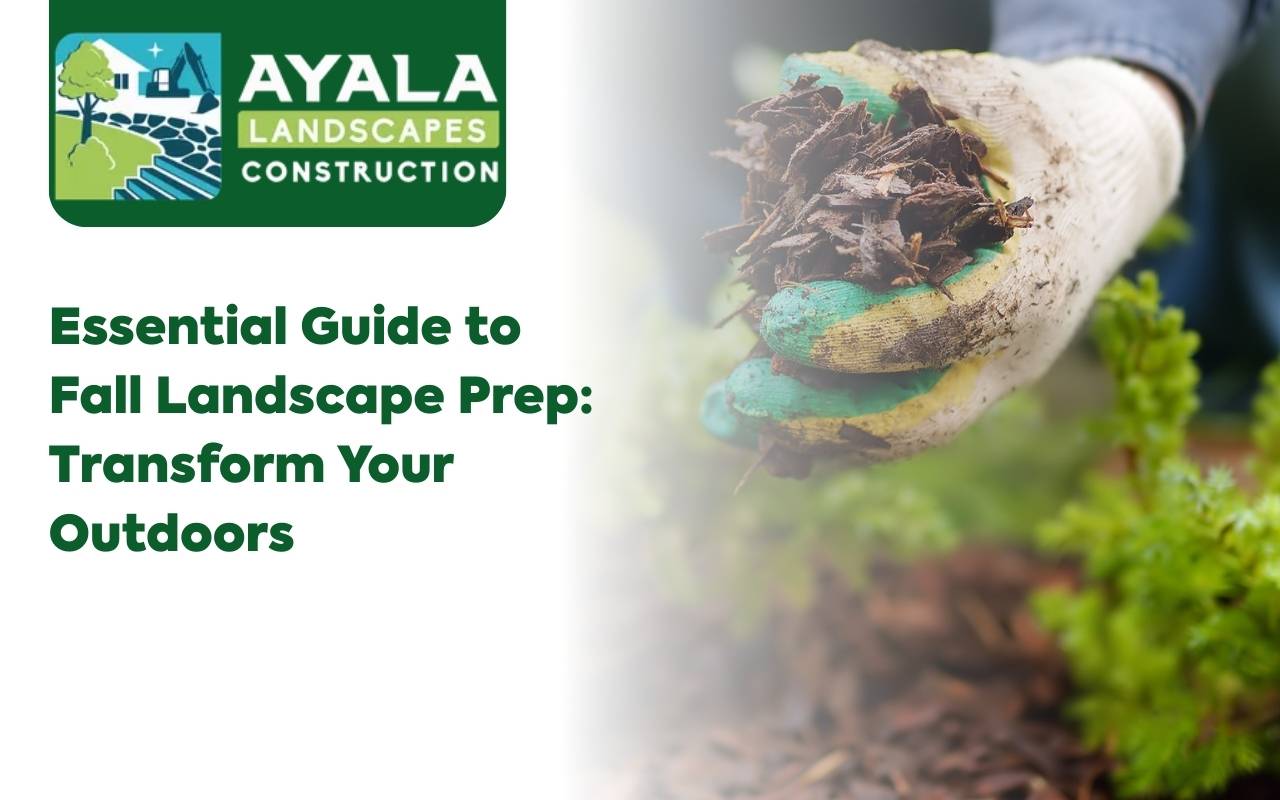
As the air grows crisp, your garden calls for care. A well-planned fall landscape prep transforms outdoor areas into resilient winter sanctuaries. Preparing now builds the foundation for thriving spring landscapes. This seasonal shift is nature’s reminder to act. Tasks like mulching, pruning, and planting bulbs protect your garden. By investing effort now, your outdoor space remains healthy year-round.
Importance of Fall Landscape Prep
As summer fades, the value of fall landscape prep becomes clear. It’s not only aesthetic—it safeguards your garden’s health and longevity. Proper fall maintenance prevents soil erosion, controls pests, and strengthens plant roots. With timely action, plants survive winter stress and flourish in spring. Neglecting these steps may result in weeds, pests, or frost damage. By preparing your garden, you ensure stronger plants and healthier landscapes.
- Strengthens plant roots for spring
- Prevents weeds and pest problems
- Protects soil against erosion
Discover more seasonal landscaping options in our
professional landscaping services.
Assessing Your Garden’s Needs
Start your fall landscape prep by walking your property. Observe soil moisture, drainage, and sunlight exposure. Take notes on plants needing extra attention. Identify weak areas or invasive weeds that require immediate action. Creating a checklist helps prioritize urgent tasks. This approach ensures efficiency and prevents important steps from being overlooked.
Clearing Out Summer Debris
Clearing summer debris is essential for fall landscape prep. Remove fallen leaves, dead plants, and spent annuals. This prevents pests and diseases from thriving over winter. Compost healthy debris but discard infected material separately. Clean the bases of shrubs and perennials, avoiding pest buildup. A tidy foundation sets the stage for effective mulching and planting.
- Remove dead leaves and annuals
- Compost healthy plant debris
- Discard diseased foliage safely
Mulching for Winter Protection
Mulching remains one of the best fall landscape prep tasks. Apply two to four inches of organic mulch around beds and trees. Keep mulch away from stems to avoid rot. Mulch insulates roots, conserves water, and blocks weeds. As it decomposes, it enriches soil nutrients naturally. Locally sourced mulch supports both plants and the environment. This step ensures healthy soil and spring readiness.
Planting Bulbs for Spring Blooms
Planting bulbs is a rewarding part of fall landscape prep. Tulips, daffodils, and hyacinths thrive when planted in autumn. Choose firm, mold-free bulbs for best results. Plant bulbs at three times their height, pointed side up. Cluster them for natural-looking displays. Combine early and late bloomers for extended color. Mark planting spots for easy spring identification. These blooms brighten your garden after winter ends.
Pruning Shrubs and Trees
Pruning is another important fall landscape prep activity. Remove dead or diseased branches for healthier plants. Use sharp, sanitized tools for clean cuts. Shape shrubs lightly and avoid over-pruning spring bloomers. Fruit trees benefit from sucker removal and thinning. Proper pruning prevents breakage from snow and ice. It also directs energy to strong, healthy growth in spring.
Lawn Care for Fall
Lawn care is vital during fall landscape prep. Aerate compacted soil to improve root growth. Apply a phosphorus-rich fertilizer six weeks before frost. This strengthens grass for winter resilience. Overseed bare patches and rake lightly for soil contact. Water deeply and consistently to encourage root development. A well-prepared lawn ensures lush, green growth in spring.
- Aerate compacted soil
- Apply slow-release fertilizer
- Overseed thin or bare areas
Protecting Sensitive Plants
Delicate plants need extra protection during fall landscape prep. Move containers to sheltered areas on frosty nights. Insulate pots with straw or wrap materials. Cluster containers to share warmth. For in-ground plants, use frost blankets or burlap. Apply pine needles or leaves around roots for insulation. Monitor moisture levels, as slightly moist soil retains more warmth. With careful steps, sensitive plants survive winter safely.
Implementing a Winter Watering Schedule
Watering remains important in fall landscape prep. Before freezing, give plants a deep soak. This fills root zones with needed moisture. After frost, water only on warmer days if soil feels dry. Avoid overwatering during freeze-thaw cycles to prevent damage. Protect pipes and hoses from freezing by draining them early. A steady watering schedule supports healthy roots and plant survival.
FAQs About Fall Landscape Prep
When should I start fall landscape prep?
Begin as soon as temperatures drop and leaves start falling. Early preparation gives plants maximum benefit.
Do I need to mulch every fall?
Yes, mulching each fall protects soil, roots, and moisture levels while blocking weeds through the colder months.
What bulbs are best for fall planting?
Popular choices include tulips, daffodils, crocuses, and hyacinths. They bloom beautifully after winter dormancy ends.
How can I protect young trees in winter?
Wrap trunks with burlap, mulch root zones, and water deeply before the ground freezes to strengthen survival.
Can lawn care wait until spring?
No, fall lawn care is essential. Aeration, fertilization, and overseeding prepare your grass for spring revival.
Setting Your Garden Up for Success
Thorough fall landscape prep ensures long-term beauty and resilience. By mulching, pruning, planting, and protecting, you prepare your garden for winter. With proper care, your landscape thrives in spring. For expert help, reach out through our
contact page and explore
our full landscaping services.
